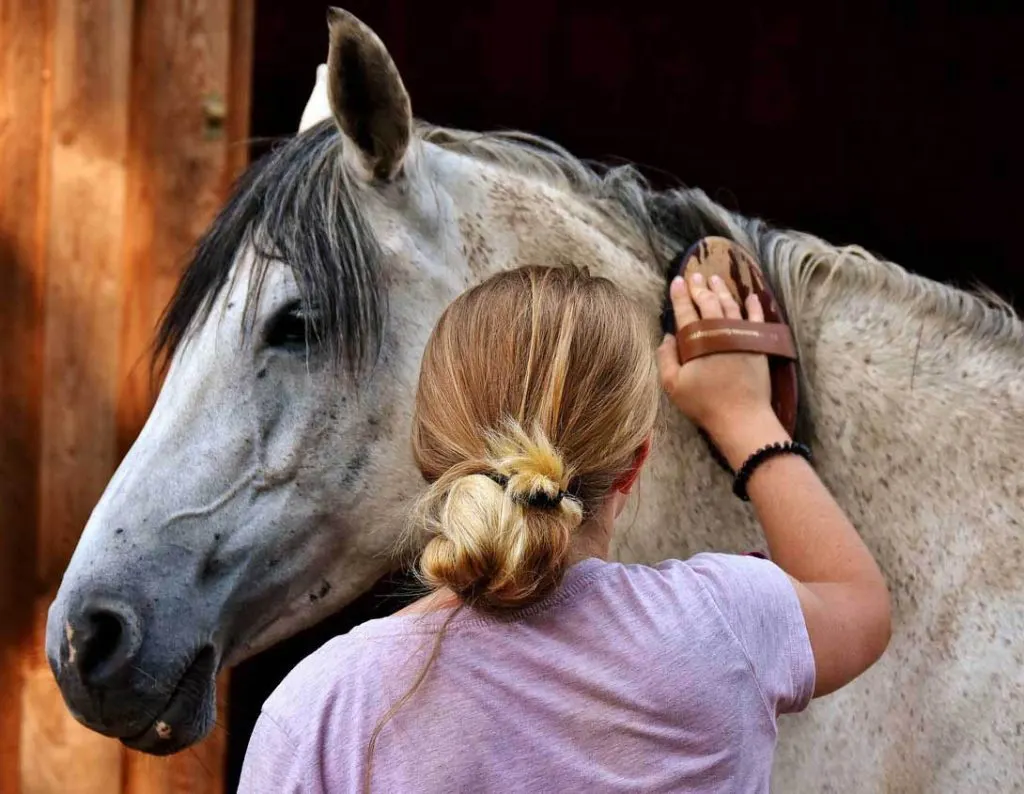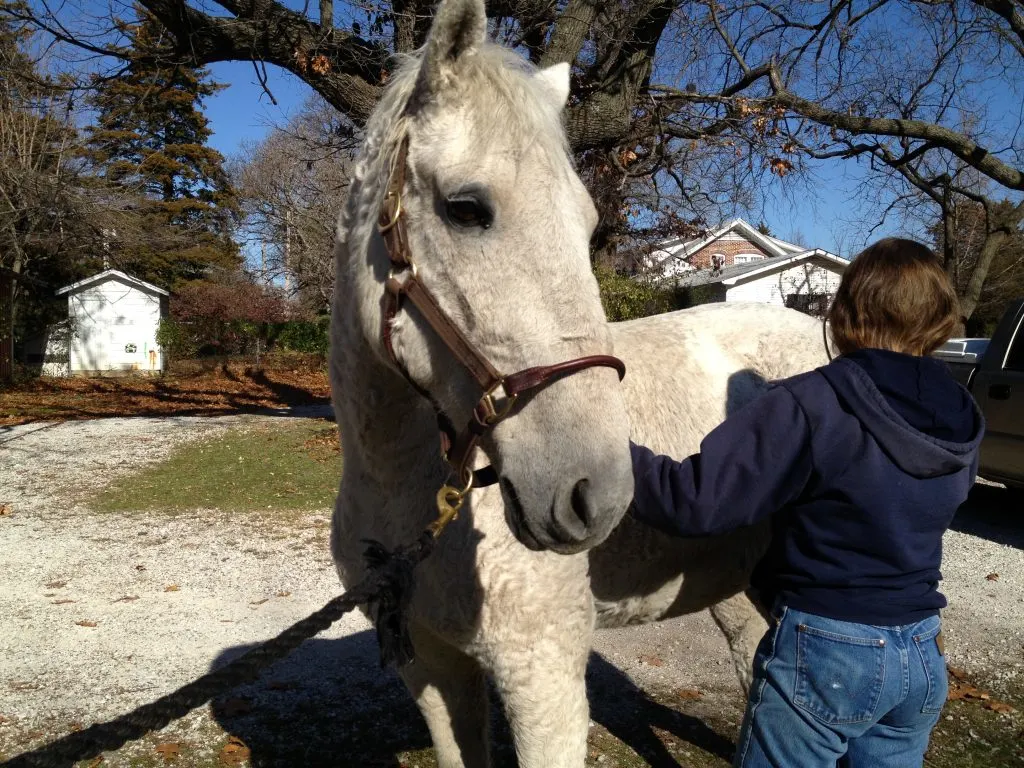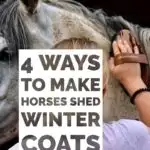Generally, horses shed their winter coats around the same time that temperatures start to warm and early spring plants begin growing. But horses might not always shed on time. In this article, we’ll talk about a few reasons that a horse’s coat might not be shedding on time or as quickly as other horses.
Provide Protection from Weather and Groom Regularly
The first factor to look at is definitely the weather. Horses that live in different parts of the world, or even regions of the United States, will shed at different times. The best way to determine whether your horse is shedding their coat late is to compare to other horses in the area – however, it is very normal for individual horses to shed at slightly different times and at different rates. Horses’ bodies intuitively know about weather and seasons change and may anticipate a late cold snap better than meteorologists can predict.
Some horses may be naturally late in shedding their winter coat in the spring. These horses can benefit from regular grooming and brushing that stimulate the follicles of the hair, new growth, and removal of the old winter coat. Good horse shedding tools can encourage circulation and prompt faster shedding.
If it’s mid to late spring and your horse is being regularly groomed but still is not shedding, it’s time to consider other explanations.

Why Groom if Horses Shed Naturally?
Grooming is an opportunity not just to curry loose hair from the coat, but also to bond and check your horse’s overall health. By noticing your horse’s body condition, the process also provides an opportunity to check for any health problems your horse may have. For example, you can check for bumps, bites, or bot eggs, and you can also look for any cuts or scratches. In addition, grooming can help increase circulation so that your horse does more free-shedding while they’re loose in the pasture- reducing grooming work for you! Regular brushing can help to remove loose hair, which can make your horse more comfortable and less likely to rub out their tail or develop bald spots while trying to scratch shedding-related itchy spots.
Keep your Horse Healthy and Dewormed
One sign that your horse might need deworming – or a veterinarian-prescribed aggressive deworming protocol- is a failure to shed their coat fully in the spring. If your horse is otherwise healthy but not shedding at the typical rate, check your worming schedule. Often, administering dewormer will result in a full loss of the winter coat soon after.

Manage Light Exposure
Even if you are regularly grooming your horse, and your horse is healthy and not infected with a parasite, your horse may not be shedding due to factors in your barn. Although it’s a common belief that daytime outdoor temperatures determine when the coat sheds, actually it’s the lengthening of daylight that signals a horse’s winter coat to shed out.
Sometimes, the lighting in barns and stables can create an artificial environment that replicates shorter days. The interior of barns are often dark, if horses are turned out during the day but put in stalls before dusk, the environment may cause a delay in winter coats shedding. This is easily remedied by letting your horses have access to a pasture 24 hours a day, adjusting your schedule for turnout, or even just changing your barn lighting. Light fixtures with Full-spectrum bulbs, timed to turn on and off automatically can even signal horses coats to shed out early in the season– making your show horses easier to groom for early-season horse shows.
Screen for Cushing’s Disease
No discussion of horses with un-shed fur would be complete without a discussion of a common disease in horses that features this as a symptom. Cushing’s disease results from a tumor in the part of the brain that regulates shedding. Often a failure to shed a winter coat is the first symptom (Although due to misunderstanding of Curly Horse genetics, sadly some Cushing’s horses are misdiagnosed as Curly Horses). With early veterinary intervention horses with Cushing’s Disease can live long productive lives after diagnosis.
Final Thoughts on Getting Horses to Shed Winter Coats Faster
There is no one definitive way to make a horse shed faster. However, there are a few key things that will help you get the job done quickly and efficiently. First, make sure you have a healthy horse and good grooming tools before you start. This will save you time troubleshooting other causes, or waiting for new grooming equipment to arrive. Second, check in with your horse’s care team about its deworming schedule and potential health issues. Finally, take your time. Rushing through the spring shedding process will only result in frustration- you can’t outsmart nature! If you take your time, groom regularly, and wait, your horse will have a beautiful and lustrous summer coat in no time.
This article covered some common reasons that horses may not shed their coats on time, as well as some interventions you can use to help your horse shed their coat sooner. In summary, if your horse is not shedding their cut on time consider the following: Weather, Grooming, Deworming, Lighting/Stabling, and Veterinary Intervention.


